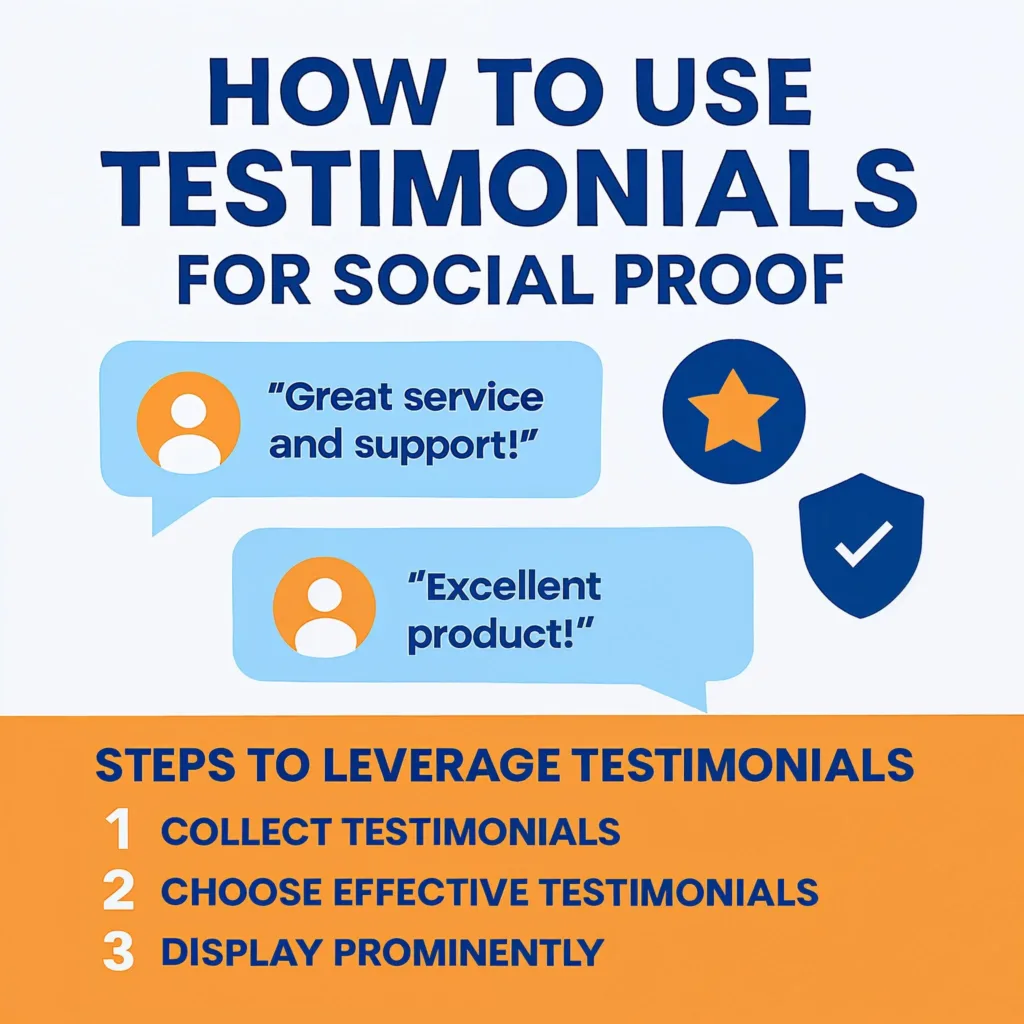
Why You Should Use Testimonials for Social Proof in Digital Marketing
In today’s fast-paced digital world, trust is everything. No matter how stunning your website looks or how polished your product is, buyers crave validation from real users. That’s why learning to use testimonials for social proof is a critical step toward building authority and boosting sales.
When people see others praising your product or service, it reduces their buying hesitation. They feel reassured. Instead of relying solely on your marketing message, they hear from someone who has walked the same path and seen results. This kind of proof is more persuasive than any ad copy.
Because competition is fierce, especially in the online space, showcasing real experiences is no longer optional. It’s essential. Let’s explore how to effectively gather, structure, and place testimonials to turn them into your most powerful sales weapon.
Types of Testimonials That Help You Use Testimonials for Social Proof
Testimonials come in many shapes and sizes. Each type can serve a unique purpose in your marketing funnel. If you want to use testimonials for social proof effectively, choose formats that match your audience’s needs and your product type.
Short Text Quotes: These are quick one-liners or 2–3 sentence reviews. Use them on landing pages, near CTA buttons, and throughout product descriptions. Keep them punchy and results-focused.
Video Testimonials: Seeing someone speak with emotion builds instant connection. These are perfect for webinar signups, sales pages, or homepage banners. You can place them strategically to maintain engagement and trust.
Case Studies: Long-form testimonials that tell a story—from struggle to success—work well for B2B, coaching, or high-ticket products. Break them into sections with before/after outcomes and quotes.
Screenshot Testimonials: These raw, informal snippets from DMs, emails, or social media are very powerful. They feel organic and spontaneous, showing that people talk about your brand when you’re not even asking.
Using a mix of these testimonial types increases your chances of connecting with different kinds of buyers—visual learners, analytical thinkers, or emotional decision-makers.
Where to Place Testimonials for Maximum Social Proof Impact
You can gather hundreds of testimonials, but if they’re hidden, they’re useless. Knowing where to use testimonials for social proof is just as important as collecting them.
Homepage: Place a compelling testimonial near the top to establish trust immediately. For example, show a client who saw results quickly or had a breakthrough moment.
Sales Page: Sprinkle testimonials after the offer, around pricing tables, and near call-to-action buttons. Use different formats to break the scroll pattern—add a carousel slider, embed a short video, or place a highlighted quote box.
Checkout Pages: A short, strategic testimonial right next to your order form can reduce friction. This is where users second-guess their decision, so real words from happy customers can seal the deal.
Emails: Add short testimonials in your email campaigns. Highlight customer wins to reinforce your product’s value. Even in subject lines—“How Alice Doubled Her Leads in 2 Days”—you’re creating curiosity and credibility.
Social Media: Share testimonials as posts, Reels, or Stories. It’s social proof in a social space. Combine it with a strong CTA or product link.
By placing testimonials across all touchpoints, you build layered trust, guiding your audience closer to conversion at every stage.
How to Collect Testimonials That Actually Convert
Generic praise like “It’s amazing!” doesn’t move people. To truly use testimonials for social proof, you need detailed, story-driven feedback.
Ask your customers the right questions:
What problem were you facing before using our product?
What changed after using it?
What specific result did you get?
Would you recommend this—and why?
Structure matters. Encourage them to mention numbers, time saved, or pain points solved. For example: “I went from zero sales to 10 clients in just two weeks after using their funnel system.”
You can automate testimonial collection using tools like Typeform, Google Forms, or even follow-up emails. Offer an incentive if needed—a discount, bonus resource, or entry into a giveaway. Make it easy, and you’ll get better results.
Additionally, never forget to get permission to use names and images. Authentic testimonials with a face and full name build more trust than anonymous ones.
Use Testimonials for Social Proof to Strengthen Your Brand Voice
Testimonials do more than convert—they reflect how your brand is perceived. When you consistently use testimonials for social proof, you begin to shape your reputation in a way that aligns with your brand voice.
Let’s say you position your product as easy-to-use and beginner-friendly. Look for testimonials that say, “I’m not tech-savvy, but this platform made everything so simple!” These reinforce your core message and help attract more of the right audience.
If you offer premium coaching, highlight testimonials about transformation, investment returns, or personal breakthroughs. Align each testimonial with a specific narrative you want to tell.
Also, use language from testimonials in your sales copy. This closes the gap between how customers talk and how you sell. It makes your message feel authentic and relatable.
Final Thoughts: Use Testimonials for Social Proof to Build Long-Term Trust
In conclusion, if you want to turn browsers into buyers, there’s no better strategy than to use testimonials for social proof. They remove objections, provide relatable proof, and show potential customers that others have already taken the leap—and won.
Make it a habit to ask for testimonials after every purchase, major milestone, or success story. Place them where they matter most: homepages, sales pages, emails, and even in your ad creatives.
But most importantly, don’t treat testimonials like decoration. Use them as a strategic trust-building tool, aligned with your message and goals. When done right, your customer’s voice becomes your brand’s strongest sales asset.